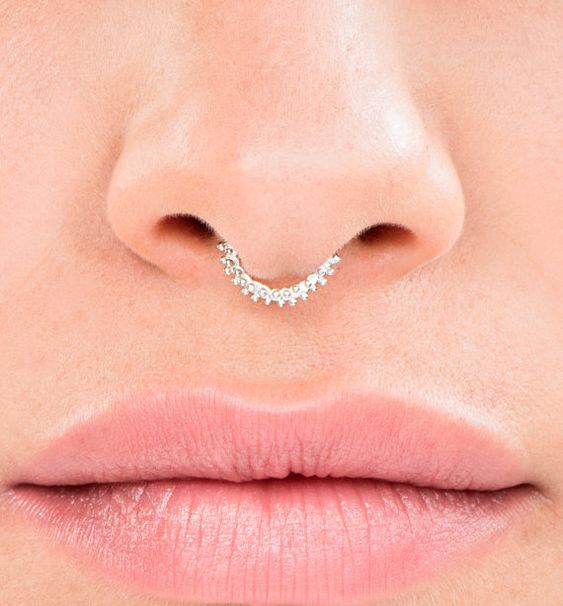Whether you’re just curious or whether you genuinely want to know if more about the types of piercings, you’ve come to the right place. We’ve compiled an essential guide with everything you need to know about the different types of piercings. Some of these areas might be slightly strange, but hey, it’s always good to know these things.
Ear piercings
These piercings are probably the most popular type of piercing that you can get. Just about everyone who’s ever got a piercing has had their ears pierced.
There are 14 different areas of the ear that can be pierced. This includes the cartilage and the softer skin (on the earlobe).
Here is a quick list with a diagram that you can refer to.

The top part of the ear
- Helix piercing- This piercing is located on the upper area of the ear.
- Industrial piercing – An industrial piercing is situated on the top part of the ear. It requires two parts of the ear to be pierced and goes through the cartilage.
- Snug piercing – A snug piercing is on the inner part of the ear towards the edge.
- Rook piercing- Rook piercings are on the same part of the ear as the snug piercing area.
- Standard lobe piercing- Situated next to your lobe; labret studs are the best to use for antitragus piercings
- Daith piercing – This piercing goes directly through the inner middle cartilage of the ear, where the helix connects to the head
- Outer conch piercing- The outer conch is right above the lobe and consists of only cartilage.
- Anti- Tragus piercing- These piercings might be painful, especially if you have a low threshold to pain. The anti-tragus piercing takes place on the area next to your lobe
- Inner conch piercing- An inner conch piercing is directly above the outer conch area of the ear.
- Forward helix piercing- If your tolerance to pain is low, you might want to sit this one out. The outer rim of the ear is pierced usually with a hoop earring.
The bottom part of the ear
- Tragus piercing – Tragus piercings are situated on the area of the ear that joins with the face. It’s a very popular ear piercing that requires the cartilage near the ear canal to get pierced.
- Transverse lobe piercing- This piercing is towards the surface of the lobe. The piercing goes through at a horizontal angle.
- Upper lobe piercing- The area of this piercing is located directly above the standard earlobe piercing.
- Orbital piercing- With an orbital piercing, it’s required to get two piercings that are done on the same part of the ear.
Nose piercings
When talking of different types of piercings, nose piercings instantly pop up. Nose piercings are a great way to modify your body. Both men and women nowadays get nose piercings, because they are so trendy.
In case you’re wondering, there are nine different spots on the nose that can be pierced. The different areas on the nose come with different amounts of pain. This is because certain parts contain much more cartilage, while other areas have much more flesh.
- Bridge piercing- If you’re looking to be bold and different, then a bridge piercing is perfect for you. It’s located between the eyes, and the width of the piercing often depends on the shape of the face and nose. (Also called an Erl piercing)
- Septum piercing- A septum piercing occurs on the skin that’s between the nostrils. This specific area is the second most popular nose piercings because it’s currently very fashionable.
- Nostril piercing- Nostril piercings are exceptionally common and are very trendy to have.
- Nasallang piercing- This piercing goes horizontally through the right nostril, septum, and the left nostril.
- High nostril piercing- Situated directly above the nostril piercing; towards the curve of the nostril.
- Septril piercing- Septril piercings face downwards and come out the front of the nose, where the septum is.
- Third eye piercing- This piercing is located in the middle area of a bridge piercing. However, this piercing goes in in a vertical direction.
- Vertical piercing
- Austin bar- This piercing is located also towards the tip of the nose, directly above the septum.
Facial piercings
- Anti-eyebrow piercing- Located under the eyebrow and eye, above the cheekbone.
- Cheek piercings- This piercing almost replicates dimples. The piercer will pierce either or both sides of the cheek with standard studs.
- Eyebrow piercing- An eyebrow piercing goes through the eyebrows.
- Tongue piercings-This includes the tip of the tongue, under the tongue and the mid-section.
- Lip piercings- Includes the lip and the lip frenulum, which is visible when smiling.
- Monroe piercing- A piercing above the lip, towards the corner.
- Philtrum piercing- Located directly under the septum.
Other areas of piercings
- Belly button piercing- Belly rings are extremely common and this trend has majorly transpired over time.
- Wrist piercing- Occurs at the surface of the wrist. Arguably, complications might occur if not done correctly.
- Neck piercing
- Nipple piercing- The piercing occurs at the base of the nipple.
- Genital piercing- This involves piercing parts of the genitalia.
- Hip piercing
- Anal piercing
Before getting a piercing
Firstly, if you’re thinking of getting one of the above-mentioned piercings than first find a good piercer. It’s important to go to someone professional who knows what they’re doing.
Once you have found a reputable piercer, you can go in to have a chat with them. This will help a great deal and you will be able to find out everything you need to know. This step is very important, it helps to know what you’re getting yourself into.
If you’re uncertain on whether or not to get a piercing, wait first and do your own little research.
What piercings should you get?
It’s always fun expressing yourself and you can choose whichever part of your body that you’d like to pierce. Furthermore, when getting any piercing done make sure to allow the area to heal properly.
Healing plays an important part so make sure that you keep the piercing clean at all times. Wash out the piercing daily with warm water to ensure that it stays clean. Only change your jewelry after the piercing has healed.







